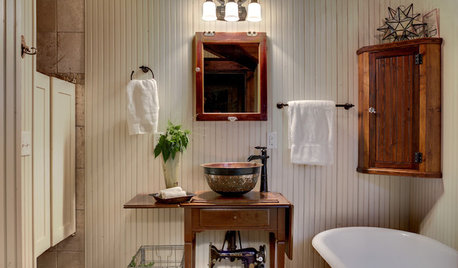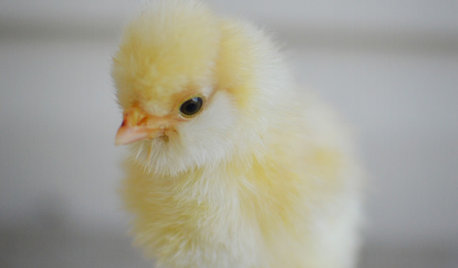Ideas needed machine to blow straw into my garden
johnnycoleman
9 years ago
Related Stories

GREEN BUILDINGWhy You Might Want to Build a House of Straw
Straw bales are cheap, easy to find and DIY-friendly. Get the basics on building with this renewable, ecofriendly material
Full Story
ARCHITECTURECity View: Chicago's Contemporary Design Will Blow You Away
Take a whirl through the Windy City's interiors and you might be surprised — they're not all in the conservative camp
Full Story
FUN HOUZZThe Unicorn in the Bathtub — and Other Mind-Blowing Sights
Fantasy and reality meet head-on in photos of costume fans in their own homes
Full StoryGREEN BUILDING11 Reasons to Live in a House of Straw
Don’t be fooled by the old folk tale. Straw bales are a strong, functional and good-looking building material
Full Story
VINTAGE STYLEAntique Sewing Machines: Tailor Made for Nostalgic Decor
In full-on vintage rooms or contrasting modern looks, old sewing machines and tables are stirring up the past in a most stylish way
Full Story
FUN HOUZZEverything I Need to Know About Decorating I Learned from Downton Abbey
Mind your manors with these 10 decorating tips from the PBS series, returning on January 5
Full Story
HEALTHY HOMEWhat You Need to Know About Dust and How to Fight It
Breathe easier with these 10 tips for busting mites, dander and other microscopic undesirables
Full Story
FUN HOUZZ14 Things You Need to Start Doing Now for Your Spouse’s Sake
You have no idea how annoying your habits at home can be. We’re here to tell you
Full Story
REMODELING GUIDESGet What You Need From the House You Have
6 ways to rethink your house and get that extra living space you need now
Full Story
PETSWhat You Need to Know Before Buying Chicks
Ordering chicks for your backyard coop? Easy. But caring for them requires planning and foresight. Here's what to do
Full StorySponsored
More Discussions






Okiedawn OK Zone 7
johnnycolemanOriginal Author
Related Professionals
Glassmanor Landscape Architects & Landscape Designers · Kyle Landscape Architects & Landscape Designers · Stamford Landscape Contractors · Allentown Landscape Contractors · Arden-Arcade Landscape Contractors · Fridley Landscape Contractors · Gainesville Landscape Contractors · Mission Viejo Landscape Contractors · Munster Landscape Contractors · Rancho Santa Margarita Landscape Contractors · Wareham Landscape Contractors · Silver Firs Landscape Contractors · Pataskala Decks, Patios & Outdoor Enclosures · San Jose Decks, Patios & Outdoor Enclosures · Surfside Decks, Patios & Outdoor Enclosuresbeesneeds
Okiedawn OK Zone 7
johnnycolemanOriginal Author
chickencoupe
johnnycolemanOriginal Author
Okiedawn OK Zone 7
johnnycolemanOriginal Author
slowpoke_gardener
johnnycolemanOriginal Author
Auther
johnnycolemanOriginal Author
Okiedawn OK Zone 7
johnnycolemanOriginal Author
coonx